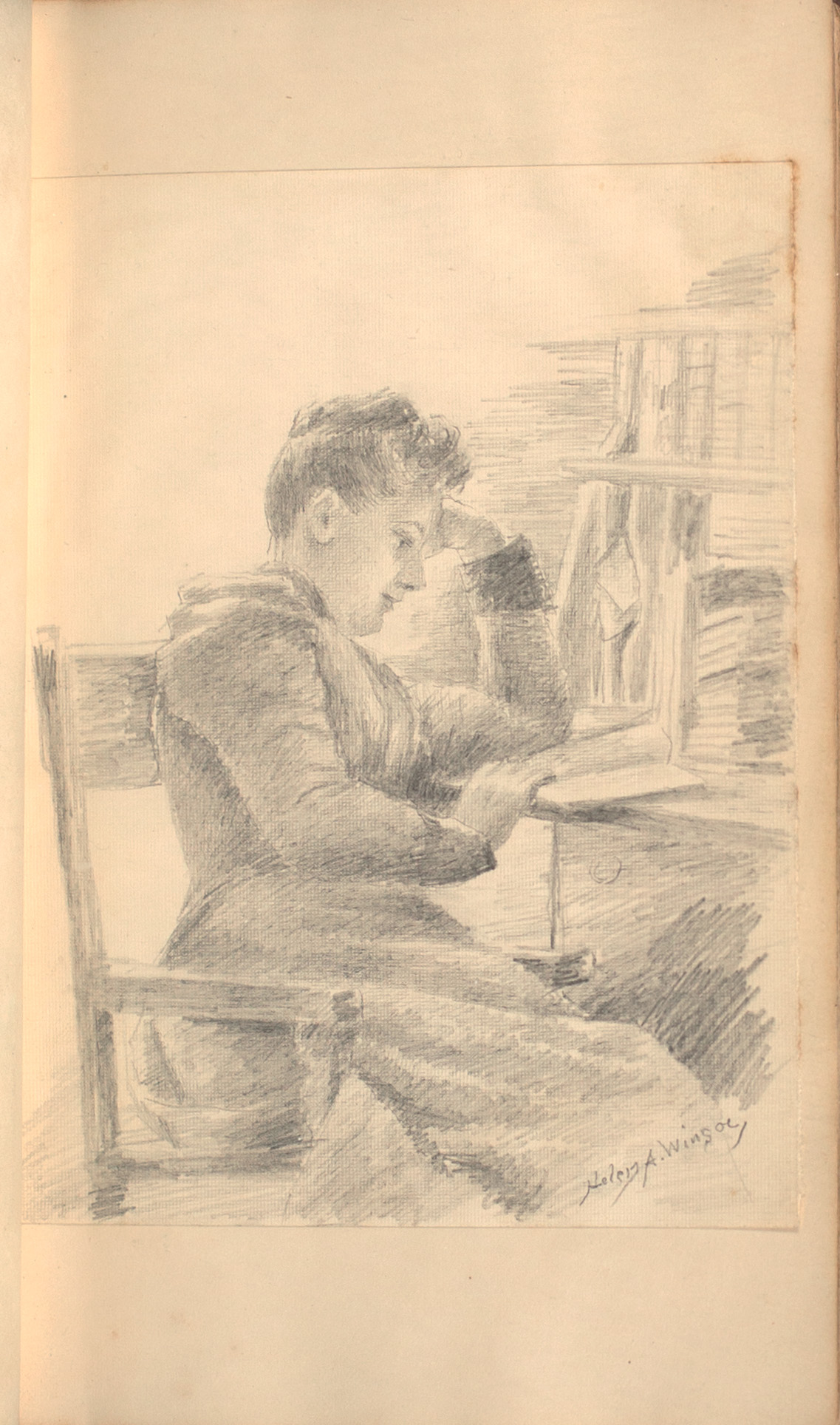Pair 15: Judging Books by their Covers
Contents
Building on a Century of Collecting at the Clements Library
Pair 2: The Power of the Unseen
Pair 4: From the Big Picture to Individual Lives
Pair 5: Picturing African-American Identity
Pair 6: Leadership and Resistance
Pair 7: The Grid, Large and Small
Pair 8: Records of Self-Liberation
Pair 9: Death of Wolfe/Children’s book
Pair 10: Thomas Gage, from the Reading Room to the Digital World
Pair 11: Colonialism and Conversion
Pair 12: Documenting Disability
Pair 14: One Nation, Under a Grid
Pair 15: Judging Books by their Cover
Pair 16: Women Writers and Intellectuals
Pair 17: The Minds of Children
Pair 19: Sex and Gender in the Public Sphere
Pair 21: Organizing the Natural World
Pair 22: Collective Memories of Abraham Lincoln
Related Resources
Pair 15: Judging Books by their Covers

Thomas Hariot, A briefe and true report of the new found land of Virginia…
London: [R. Robinson], 1588.
This group focuses less on what we collect and more on what we do with the things that we collect. It begins with Number 8 in 101 Treasures, one of the genuine treasures of the Clements collections (and an item that Mr. Clements felt was one of the jewels of his library). Thomas Hariot was a mathematician and astronomer who was sent by Sir Walter Raleigh in 1585 to survey the new British colony of Virginia. Published in London in 1588, and one of only six known copies. Hariot’s Briefe and true report of the new found land of Virginia is the earliest English book that describes in any detail the first English colony in North America. Hariot wrote to praise the fertility and healthfulness of Virginia, in an effort to bolster interest (and investment) that had been dampened by the negative reports brought back by those who had returned to England after the disastrous Roanoke voyage of 1584.
As was the custom for elite book collectors in his day who acquired a great prize, William Clements did not leave Hariot’s report in its original form, but rather had it rebound in deluxe style by the London firm of R. Riviere, who were the bookbinders of choice for great collectors on both sides of the Atlantic. The book is bound in crushed green goatskin, with both blind and gold tooling, in a matching slip case. The text edges have been gilt, and marbled endpapers have been added. This style of rebinding was relatively common at the time, and the shelves of Mr. Clements’ original library were full of similar volumes.
The library also holds a copy of a humble dime novel from the early 1860s by Edward S. Ellis, The Life of Pontiac the Conspirator, Chief of the Ottawas. When this volume was issued by the firm of Beadle and Company, it would most likely have had a salmon-covered paper wrapper with a crude woodcut illustration. As a note on the front free endpaper from the library’s first director, Randolph G. Adams, states, “This volume was handed, unbound, to the Commercial Bindery of Detroit in 1931. The Bindery desired to prove what good and artistic binding could be done in Detroit. This is what they did!!” The front and back covers are in elaborately tooled brown goatskin in a rather rustic Native American motif (including a Plains Indian-style headdress on the back cover) that makes up in exuberance what it lacks in refinement. The rebound book sports black leather lettering pieces on the spine, new green marbled endpapers, and red text edges. It’s unclear whether the decision to give this deluxe treatment to a book that had cost only a dime when new was a bit of a joke, or simply an attempt to show how even the humblest volume could be dressed up. Either way, this new artifact is almost entirely about the cover, and not about the book itself.

Edward S. Ellis, The Life of Pontiac the Conspirator, Chief of the Ottawas: Together with a full account of the Siege of Detroit.
London and New York: Beadle and Company, 1861.


Nowadays, our strong preference is to purchase books in their original wrappers whenever possible. And we typically do not rebind books that we buy (although we will repair bindings that have been damaged). This is not out of any lack of appreciation for the skill and art of bookbinding, but rather because collecting interests and trends in scholarship have come to place greater value on working with artifacts that resemble as closely as possible what readers in the past would have encountered. This copy of Sarah M. Howe’s The Woodman’s Rifle, and the Forest Maiden, published in the mid-19th century by Dick & Fitzgerald in New York, shows the amount of important information that even flimsy paper wrappers contain for students and scholars. The vivid colors of the cover, combined with the lurid illustration, are what would have sold this book to readers in the 19th century, while the list of other Dick & Fitzgerald titles on the back allows researchers to recreate context of the larger world of print that this obscure title occupied. So even though the front wrapper has come loose, there will be no deluxe goatskin binding in this book’s future.

Sarah M. Howe, The Woodman’s Rifle, and the Forest Maiden
New York: Dick & Fitzgerald, [1854].


